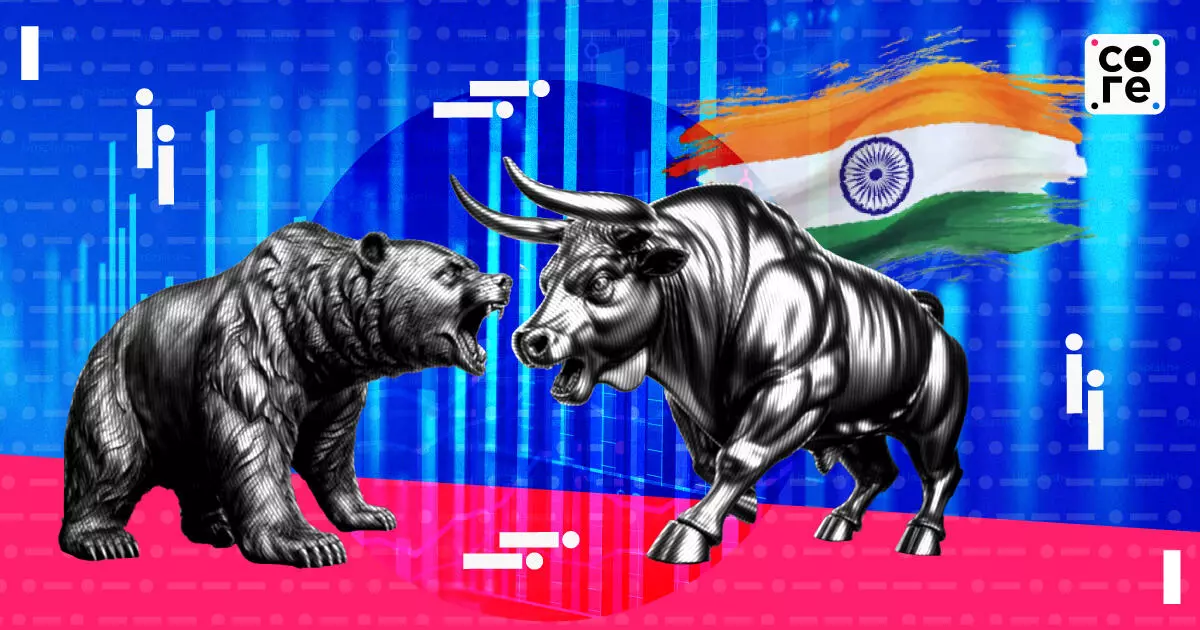
Modi Stocks, Trump Tariffs, and the Unpredictability of Geopolitics
CLSA and Citigroup's duelling reports unveil the futility of predicting India's market maze amid Trump's tariff threats and geopolitical turbulence.

In May this year, stockbroker CLSA Ltd. put out a Modi stock portfolio listing 54 stocks it was betting on to ride the Modi wave when he returned to power. Which he did, but clearly not in the way that CLSA or most of the markets had expected, so CLSA revised that portfolio to just two stocks: Oil and Natural Gas Corporation (ONGC) and Reliance Industries.
In early September, it emerged the so-called Modi stocks had climbed only 2% as the government completed its first 100 days in office after that third term win in June. In contrast, consumer and software stocks rallied 20% and 34%, respectively, Bloomberg pointed out.
Over the weekend, CLSA was back trying to grab attention by putting out a report called 'Pouncing Tiger, Prevaricating Dragon', the meaning of which is not so clear to me but must be to the authors. It said that CLSA was reversing its earlier tactical allocation shift from India to China.
As a quick backgrounder, in October 2023, CLSA upgraded India from 40% underweight to 20% overweight, citing a favourable credit environment, lower energy costs due to discounted Russian crude, and strong GDP growth prospects.
A year later, or last month, CLSA reduced India's overweight to 10%, while adding to China amid what appeared to be early signs of a market recovery in the Dragon nation.
This is obviously independent of the Modi stocks proposition put out in May and has more to do with the big exodus of...
In May this year, stockbroker CLSA Ltd. put out a Modi stock portfolio listing 54 stocks it was betting on to ride the Modi wave when he returned to power. Which he did, but clearly not in the way that CLSA or most of the markets had expected, so CLSA revised that portfolio to just two stocks: Oil and Natural Gas Corporation (ONGC) and Reliance Industries.
In early September, it emerged the so-called Modi stocks had climbed only 2% as the government completed its first 100 days in office after that third term win in June. In contrast, consumer and software stocks rallied 20% and 34%, respectively, Bloomberg pointed out.
Over the weekend, CLSA was back trying to grab attention by putting out a report called 'Pouncing Tiger, Prevaricating Dragon', the meaning of which is not so clear to me but must be to the authors. It said that CLSA was reversing its earlier tactical allocation shift from India to China.
As a quick backgrounder, in October 2023, CLSA upgraded India from 40% underweight to 20% overweight, citing a favourable credit environment, lower energy costs due to discounted Russian crude, and strong GDP growth prospects.
A year later, or last month, CLSA reduced India's overweight to 10%, while adding to China amid what appeared to be early signs of a market recovery in the Dragon nation.
This is obviously independent of the Modi stocks proposition put out in May and has more to do with the big exodus of foreign capital that happened starting September 27 and has crossed over US $13 billion now.
Now CLSA says it has reversed its tactical allocation in early October, returning to a benchmark on China and a 20% overweight on India. It also points out that both MSCI China and India have corrected by 10% in US dollar terms, so they did not lose making the switch.
It further adds that the chief risk to Indian equities is a frenzy of issuances or Initial Public Offerings (IPOs) swamping the market, with cumulative 12-month issuances being equal to 1.5% of market capitalisation—a tipping point.
On that, I agree. So what’s changed?
Obviously Donald Trump who has threatened to hit China with 60% import tariffs into the United States - imports from China were around US $165 billion in 2023.
India will get hit too, between 10% and 20% as per the promises made or threats issued so far.
Which figure will hold by end-January, when the presidential transition occurs, is tough to say at this point. Remember, if all countries get hit, then the relative damage is lower, and countries like China are better prepared now.
Anyway, a fresh report in Bloomberg yesterday points out that CLSA and Citigroup are taking opposite stances on Indian equities. India is least likely to feel the heat from potentially higher Trump tariffs, and India offers a relative oasis of forex stability, and the recent stock declines have made valuations attractive, CLSA says.
Citigroup, on the other hand, has downgraded Indian stocks, citing concerns about weaker earnings momentum. But then, in May, Citigroup downgraded Chinese equities to neutral and upgraded India to overweight, saying they liked markets with inflecting earnings and strong Earnings Per Share (EPS) momentum.
It would take much concentration to keep pace with these shifts. On the other hand, almost everything we discussed so far is now out of the window. Which tells us a few things.
One, no one is able to accurately predict anything beyond a few months, particularly when geopolitics is involved, and that is increasingly playing a role in our lives and stock prices. Most predictions are based around events and not a longer-term view.
If there was a longer-term view on a sector or company, which there would have been, it would not matter either way because something else would happen and supersede it.
Finally, stock analysts are human and can sometimes rush to make up for lost calls, including with fancy charts which you and I are not good at.
The good news is that Donald Trump is human too and he might change his mind before January 20, 2025.
CLSA and Citigroup's duelling reports unveil the futility of predicting India's market maze amid Trump's tariff threats and geopolitical turbulence.

